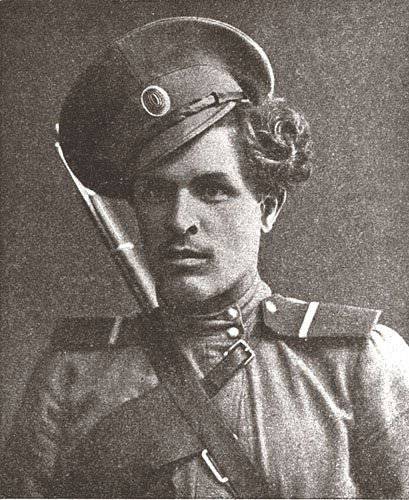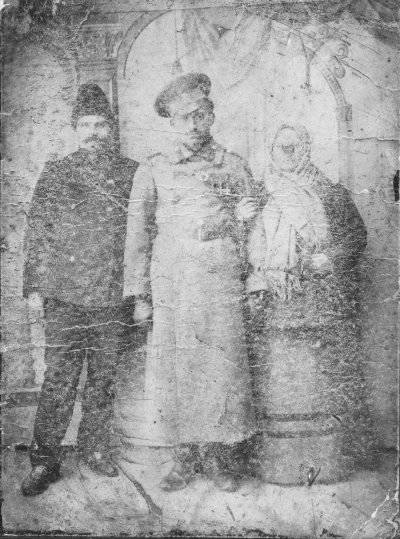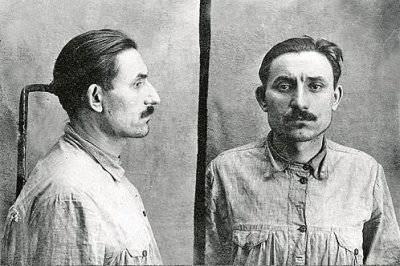The legend of the Don Cossacks Kharlampy Ermakov and "Quiet Don" Sholokhov
 According to Mikhail Sholokhov - the author of the epic novel “The Quiet Don”, his favorite hero in the book was Grigory Melekhov. The image of this hero, his fate and even his appearance were written off from a real person - Kharlampiy Vasilyevich Ermakov.
According to Mikhail Sholokhov - the author of the epic novel “The Quiet Don”, his favorite hero in the book was Grigory Melekhov. The image of this hero, his fate and even his appearance were written off from a real person - Kharlampiy Vasilyevich Ermakov. Sholokhov was personally acquainted with the prototype of the main character of his novel, they often met and talked in 1926, when the writer was collecting materials for his work. The author came to the village of Veshenskaya, and he and Yermakov spent long nights talking, smoking and arguing. A letter is kept in one of the archives in which the writer asks Ermakov to meet. Sholokhov was then very interested in the events of the 1919 of the year related to the fate of the Don Cossacks during the Veshensky Uprising.
It is not by chance that the author turned to Harlampy Yermakov. The fate of this legendary man was not easy. He was born on the farm Antipovskoy Veshenskaya stanitsa, now it is the Rostov region. He grew up in an ordinary Cossack family, graduated from a local parish school. The childhood and youth of Yermakov were not distinguished by something special, they passed like the majority of his countrymen.
Kharlampy began his military service in 1913, at the age of 22. Faithfully served the Tsar and the Fatherland. Then he was sent to the Russian-German front, where he proved himself a hero. Exist historical Information about the mastery of Ermakov’s saber. Eyewitnesses of those events called Ermakova "a brave grunt." His blow was of tremendous power, and he could cut with a saber from both hands. Harlampy repeatedly used this advantage in battle, approaching the enemy from the opposite side, which made him by surprise. Grigory Melekhov was awarded the perfection of mastery of this technique by Mikhail Sholokhov in the novel "Quiet Don".
The young Cossack took part in the First World War. Bravely fought, had more than a dozen wounds, contusion. He showed himself only from a decent side, was awarded the St. George Medal “For Bravery” four times, received four St. George crosses (Grigory Melekhov had the same awards in the Quiet Don). As a result, he was awarded the honorary title of cornet, which was equal to the officer's rank. In the autumn of 1916, Harlampy Yermakov was seriously wounded and demobilized.
 Soon the 1917 year comes - a year of great changes both in the fate of Russia, and in the fate of the entire Don Cossacks. This year was a turning point for the Cossacks - many were faced with a difficult choice. Initially, Yermakov chose the Soviet authorities, fought in the Podtelkov detachment, and fought against Kaledin. In one of the battles near the village of Likhoy he was wounded and went home for treatment. At this time, his detachment was captured by the rebels, Podtelkova and his loyal soldiers were executed.
Soon the 1917 year comes - a year of great changes both in the fate of Russia, and in the fate of the entire Don Cossacks. This year was a turning point for the Cossacks - many were faced with a difficult choice. Initially, Yermakov chose the Soviet authorities, fought in the Podtelkov detachment, and fought against Kaledin. In one of the battles near the village of Likhoy he was wounded and went home for treatment. At this time, his detachment was captured by the rebels, Podtelkova and his loyal soldiers were executed.In 1919, the Cossack uprising erupts in the Veshenskaya Uprising. Historians claim that the hatred of Lenin and Trotsky for the Cossacks was the cause of mass uprisings. The Central Committee of the RCP (B.) Issues a secret Directive in which it calls for waging a merciless struggle against the upper classes of the Cossacks by means of their total extermination. As a means - mass terror against the rich Cossacks, the confiscation of property and complete disarmament. When retested, if detected weapons - shooting.
After a short period of time, another Directive, no less bloodthirsty, signed by the Donburo of the RCP (b), is issued. This document ordered the arrest of prominent representatives of the villages and farms, to keep them as hostages. In case of detection of weapons from any resident of a village or a farm, shoot the hostages along with the guilty. The red commissars killed everyone. In some places, there was a genuine genocide of the Cossack population. The Cossacks could not stand it, they took up arms, the quiet Don began to stir.
Kharlampy Ermakov elected commander of the rebels, takes an active part in the battles. He fiercely fights for his people, his homeland.
At the same time, a civil war begins in the country. Soon, the Veshensk rebels were united by the White Army. Don General Bogaevsky produces Ermakova, first in the centurions, and a month later - in the captains. In early March, 1920, Yermakov was captured, but numerous eyewitnesses stand up for his beloved saula. The time in the country was “dashing”, good commanders were worth their weight in gold. The command of the Red Army offered Harlampy to form a separate brigade of the remaining White Cossacks. Later this brigade joined the 1-th Cavalry Army of Budyonny. Only in 1923, Yermakov demobilized and returned home.
 Approximately the same end and the novel Sholokhov: Gregory Melekhov returns home and on the banks of the Don meets his son. But the fate of Harlampy Yermakov was much more complicated. Just a year he lived with his family. In February, 1924, he was arrested for participating in a counter-revolutionary uprising. The Cossack hero does not deny his participation even under the threat of execution of the whole family. Countrymen Yermakov collected in testimony of his words testimony. In May 1925, the court ruled that the accused was not a voluntary participant in the riots, but was called upon by the district atamanism.
Approximately the same end and the novel Sholokhov: Gregory Melekhov returns home and on the banks of the Don meets his son. But the fate of Harlampy Yermakov was much more complicated. Just a year he lived with his family. In February, 1924, he was arrested for participating in a counter-revolutionary uprising. The Cossack hero does not deny his participation even under the threat of execution of the whole family. Countrymen Yermakov collected in testimony of his words testimony. In May 1925, the court ruled that the accused was not a voluntary participant in the riots, but was called upon by the district atamanism. In 1927, Harlampia was arrested again. This time, investigators found eyewitnesses who testified to Yermakov’s personal participation in the execution of the Red Army and anti-Soviet propaganda in the village. Then there was general collectivization throughout the country, the Bolsheviks were afraid of a new uprising, so the court decided to shoot the hero, despite the protest of the regional prosecutor. In June of that year, the sentence was carried out. Thus ended the short but vibrant life of the Don Cossack, which left a deep furrow in history. Harlampy Ermakov was rehabilitated only in the 1989 year, posthumously.
Information